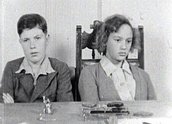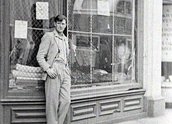


These Are Our Children (1948)
Synopsis
This silent dramatised documentary, commissioned by the Brotherhood of St Laurence and made by the Realist Film Unit, centres around the fate of two teenage siblings who live in the slums of Melbourne.
Curator’s notes
Through the lives of fictional siblings John and Molly Bradley, These Are Our Children is an indictment of the social injustice and negative impact on child welfare that many of Melbourne’s inner-city poor were experiencing at the time. By creating the characters of John and Molly Bradley, director Ken Coldicutt uses their story to illustrate the plight of such children. Dramatised documentaries are a powerful way of telling stories about ‘true life’. The social realism serves well to engage the audience in the world created within the film. Actuality scenes of slum interiors and poor suburbs are sprinkled throughout the film to enhance its documentary feel.
These Are Our Children is one of three silent films in this style commissioned by the Brotherhood of St Laurence as part of its ‘war on slums’ campaign along with Beautiful Melbourne and A Place to Live. Made with a clear purpose and dramatically conveying a strong message, Father Tucker, founder of the Australian branch of the Brotherhood, toured the trilogy of films around the country and provided live commentary with the screenings. At the end of this film, 90 seconds of title cards provide a visual plea to the audience to help the Brotherhood of St Laurence in its ‘war against slums and all the evils that come therefrom’. As well as being promotional material for the Brotherhood of St Laurence and its work, these films would also have raised general awareness of inner-city housing conditions in Melbourne at the time.
Tucker engaged the services of filmmaker Ken Coldicutt, who founded the Realist Film Unit in 1945, to make These Are Our Children. The Realist Film Unit made several films that engaged with social justice issues. Its members were active participants in Australia’s early film society movement and some went on to set-up the Olinda Film Festival, the forerunner of the Melbourne International Film Festival.
A recent documentary and new media installation by independent filmmaker John Hughes entitled The Archive Project examined the Realist Film Unit’s work during the late 1940s and early 1950s.
- Overview
- Curator’s notes
- Video 3 clips
- Principal credits
- Find a copy
- Make a comment
- Map
- Add your review



